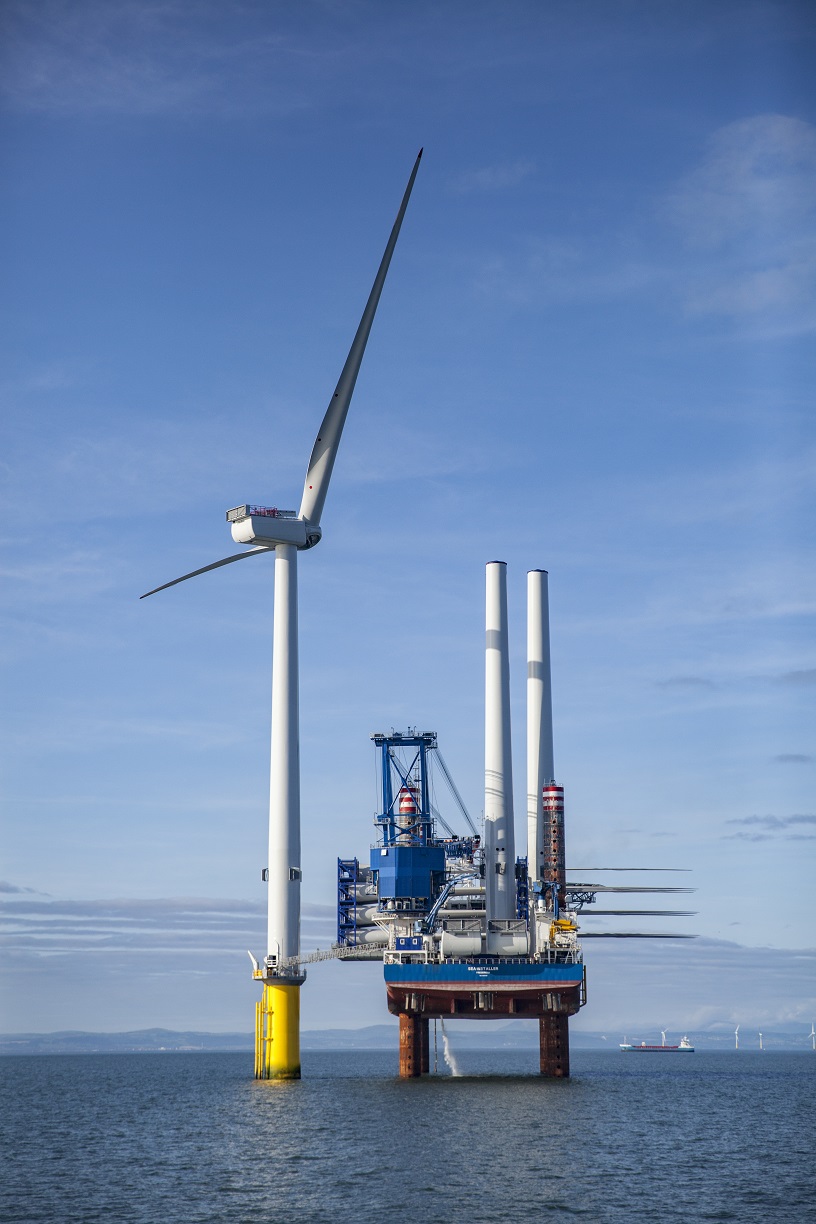Liverpool Bay wind turbines take shape
The first of 32 giant wind turbines, each nearly twice as tall as the Royal Liver Building, has been successfully installed at the £1.3bn Burbo Bank Extension offshore wind farm at the entrance to the Irish Sea.
At 195m, the MHI Vestas 8MW turbines are the largest in the world and it is the first time they have been used in an offshore wind farm. Once completed the 258MW wind farm will generate enough electricity to power over 230,000 UK homes.
 Claus Bøjle Møller, project director, said: “By using bigger turbines we are able to bring down the cost of providing clean, renewable energy to homes around the UK.
Claus Bøjle Møller, project director, said: “By using bigger turbines we are able to bring down the cost of providing clean, renewable energy to homes around the UK.
“This positive milestone is a significant achievement for the project and we look forward to producing more green energy here in Liverpool Bay.”
As well as using the biggest turbines in the world, the 80m blades for the new 8MW turbines will also be the first locally built blades to be installed at a UK offshore wind farm, having been designed, tested, and manufactured on the Isle of Wight and assembled at MHI Vestas’ pre-assembly facility in Belfast.
About 45 full-time employees will work on both the Burbo wind farms out of a newly built operation and maintenance facility in Liverpool for the expected 25-year lifetime of the wind farm.
The project is a partnership between Dong Energy, which owns 50%, Danish pension PKA, 25%, and Kirkbi A/S, parent company of the Lego Group, also holding 25%.





Fantastic size and amount of energy they can produce, when at their optium. The Liverpool Bay and River Mersey is fast becoming the Power house of the North West, with this and other planned renewable energy schemes.
By Man on bicycle
Fantastic. I hope to one day read that is the entire UK that has achieved the mile stone of a whole day on sustainable energy.
Also, trying to work out whats going on in that picture. Is that a boat on stilts with scaffolding and a crane coming out of it? nuts.
By Name
The self supporting platform, either sails out under it’s power or towed out by specialist tug (AHTS). Once in position it’s legs are lowered to the seabed for stability and accuracy, and it’s own self mounted crane lowers it’s cargo(towers) in the correct location. After completion it raises it’s supporting legs and moves on. Some off shore Wind farms float on their own structure and are secured to the seabed by very large anchors, this is where the depth of the water is too deep for the normal pylon type of turbine.
By Man on bicycle